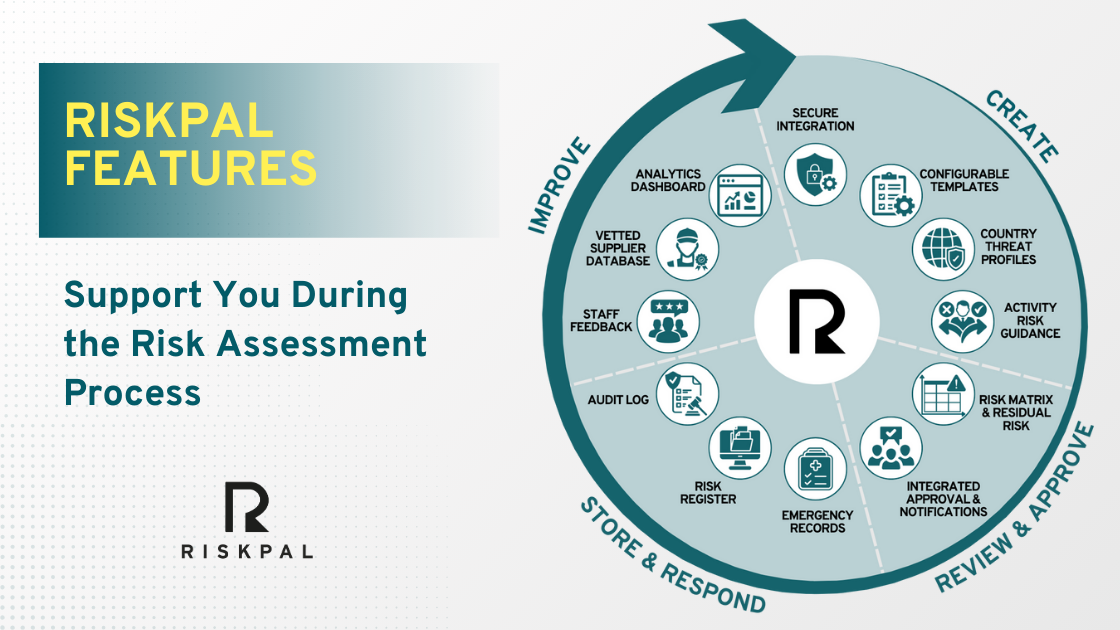Using Data in a Data-Shy Industry: The Power of Data-Driven Risk Analytics
Data Is Everywhere
Currently, experts estimate we are producing around 2.5 quintillion bytes of data every day. Every piece of information serves a specific purpose, teaching us about business operations, behaviours and customer needs.
Yet a surprisingly low number of companies take full advantage of their data. The average company only uses around 50% of available data in decision-making. In a digital age, poor data management can cost companies around $9.7 million each year. It’s time for today’s risk management experts to discover and harness the true potential of data. Intelligent insights aren’t just for single tasks, like logging security incidents or accidents.
Data becomes truly transformational when it’s managed in a holistic way, contributing to consistently better evidence, understanding and opportunities to improve.
The Age of Data is Officially Here
In most industries, data has become a core component of essential businesses processes. Marketing teams use data to guide promotional campaigns and audience engagement, while sales experts rely on data to qualify leads and gauge performance. However, most risk management teams are still stuck in an age of using data reactively, rather than proactively, if at all.
Data analytics make it easier to measure, quantify, and even forecast threats and risky behaviours with greater certainty. Previously hidden patterns and relationships can be revealed to dispel long held, often incorrect, assumptions and empower decision makers.
Mere data collation is not enough. Many companies are rich in data but poor in information. Interpretation and analysis are vital. At RiskPal we have developed our Analytics module to give risk managers the insights required to make a difference, and smartly reduce risk, from a position of knowledge. Our analytics give managers a granular penetration of the risk their organisations are engaging in so they can prioritise resources in the right places.
Fail to join the data revolution now, and you risk being left behind.
The Benefits of Leveraging Data for Your Business
With the right tools, you can transform unstructured data into meaningful, actionable insights for the digital age.
Some of the most significant benefits of data analytics include:
Proactive risk management
Gut-based decisions and assumptions rarely have the best outcomes for any business. As mistakes become increasingly expensive and time-consuming to manage, it pays to have the information to power proactive risk management. Having data to analyse not only helps businesses to make better decisions in the moment, but can also make it easier to predict trends and prevent issues from happening in the long-term.
Effectively capturing and analysing historical data can help you to define, pinpoint, and prevent potential issues in the future. Correlating patterns between identified threats, destinations or activities and incidents can demonstrate exposure in your business, informing, for example, areas for training, additional protections or necessary amendments to insurance.
Better workflow and boosted efficiency
It’s harder to disrupt old fashioned workflows without the evidence to back it up. Access to data will make it easier to present a clear case for any new project or change. Analyse length of risk assessment approval, or the common reasons why some template types or departments do not process approvals, with our smart analytics.
Improved financial health
Data is one of the most powerful tools your company can access when searching for ways to save money. Data analysis of commonly used international suppliers, frequency of certain activities or having readily available information on your travel patterns when renewing your insurance, can all help determine when spending is higher than it needs to be.
Bringing Data to the Risk Management World
Today, decision makers need to make the right calls faster than ever before. The pace of social media and communications, means businesses cannot afford to prevaricate. At the same time, any wrong decisions are punished quickly.
Really understanding what risks your people are undertaking, how they mitigate them and how successful they are in their efforts will give you the advantage in what to focus on. Many risk management leaders are already taking full advantage of data to proactively identify and reduce risk exposure.
Furthermore, the new ISO 31030 travel risk management (TRM) standard also outlines the importance of data analytics, stating that the TRM function “should identify, collate and track programme key performance indicators to provide stakeholers with actionable metrics to evaluate and increase programme effectiveness.”
Data records don’t appear overnight. Failure to plan for the integrating data analytics into your risk management strategy of the future will see you rapidly fall behind the competition and struggle to catch up.
Starting to think differently about your risk assessments and safety?
Contact us to find out more about how RiskPal is transforming the risk assessment process.



